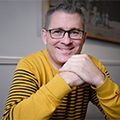One word always separated me on my self-taught journeys in photography from the fully competent professional: manual.
What did it mean to shoot in manual mode, and why would I want to?
It continually threw a pang of fear in me, mainly because it was the only element of taking pictures that I was too embarrassed to ask about.
I was no ‘professional’ myself, and it made me feel inferior to think that I would have to ask a photographer who was. It was the question that kept me from stepping up to the mark.
I feared becoming a professional on the basis that all it meant was I could remove automation from my exposures and fly manual. For if that was all it meant to be professional, I would prefer to remain blissfully ignorant.
Weekend warrior
It might have been that I chose this knowledge gap as a mask for other reasons against the idea of professional photography.
Had I, for example, put such barriers up for myself before eventually deciding to shoot weddings more professionally? Had I remained so long the ‘weekend warrior’ simply because this meant I was safe in the self-satisfaction that being professional seemed to mean shouting too much at the happy couple’s relatives. I was content, then, to carry on my distinction.
This sort of decision – to hold myself apart from the full-time pros – helped in turn to reinforce that original excuse for ignoring manual, for choosing not to understand it. I was not a professional; I was not expected to understand it.
It did not help me to want to become a pro that I suspected professional photographers themselves saw working in manual mode as the one element of top-flight skill that marked them out as the accomplished master craftsmen. I felt that they founded their attitude of superiority over us, the enthusiasts, on this one small gap in our understanding.
I once saw an inspiring slideshow given to us at a magazine publisher’s office by the “celebrated press photographer”, Mike Maloney, in which he lamented the time that a photographer next to him in the football stadium had been unable to guess at the exposure needed, to pluck it from the air in front of him. “What aperture do you think we need in here – f4?” He had been astounded not to have been given a knowledgeable response.
This put me in my proper place. Not only was I not a professional, but I saw that even a photographer who was (albeit relying on later technology) could also be put down on the question of manual.
Number 10
I was thoroughly enjoying the slideshow right up until that point – inspired by the remarkable stories behind the pictures, such as how Mike had managed to get Tony Blair, when he was Britain’s prime minister, to sit under the light of one of the standard lamps on the floor of the hallway at Number 10 Downing Street. The country’s leader suited up but slumped down – as off-duty but nonetheless recognizable as her majesty would be on a chaise longue with corgis at her feet. The photographer showed picture after picture to reveal as much about this gift for the gab in moulding something that bit different as about his eye for the picture.
But I would go on to find that I need not have feared the professional status for so long, need not have kept so dear the relaxed enthusiasm of just enough knowledge. It simply clicked, and there I was, manually making light – metaphorically and literally – of that previously elusive technical touch.
It was Damien Lovegrove who sealed it for me, one of the masters and champions of light as the critical ingredient, above all else, for a great visual treat. Yes, you need everything else, but without light, you have none of it – light is everything. And Damien is a trainer of photographers who is not afraid to share his knowledge.
Simple readings
He teaches you that he would light the whole of a wedding’s interior shots, especially for winter photography, at the exact same manual values worked out by eye and experience, and he would stick with this single set of simple readings. Now I knew for sure that it was not such a scary or variable thing to follow after all, and manual was easy.
So I have overcome my hurdles and I understand the light from that purely technical view we give our own eyes when we fly manual, when we wrest control from the automated eye of the camera.
Yet getting properly in touch with the values of light as taken in by lens aperture, shutter speed and sensor/film sensitivity – and finally enjoying a simpler truth for this triangle of variables – delivered me back to the happy place.
I did not need to aim for the label of ‘professional’ any more. Nor did I worry about whether it mattered. I could once more say to myself that I did not really need, because I did not really want, the clever tricks that had set people apart.
This final magic, my final understanding of manual: it is just a shortcut, and it is not all that necessary to making photographs. The truth, I would learn, is that there is no distinction held by professionals in the digital age that has anything to do with technical knowledge. There was no such high barrier in the film age either.
The great photographers who inspire me, they know this too. Whether a press photographer, talented trainer or Henri Cartier-Bresson, I just want to look at their pictures. The technical barriers, they prove to be more mental than physical, and they can tumble down after all.
See my pictures: photographsbymark.com
Originally published on 26th January 2014
Copyright © by Markus MacGill, 2014-2025. All rights reserved.
